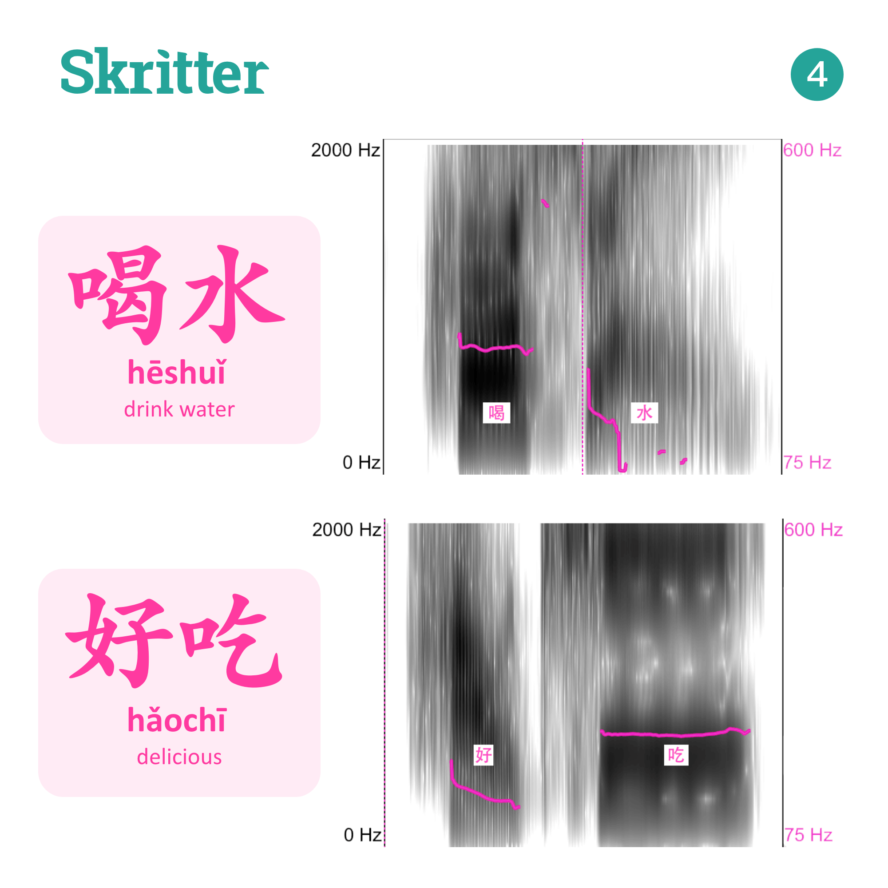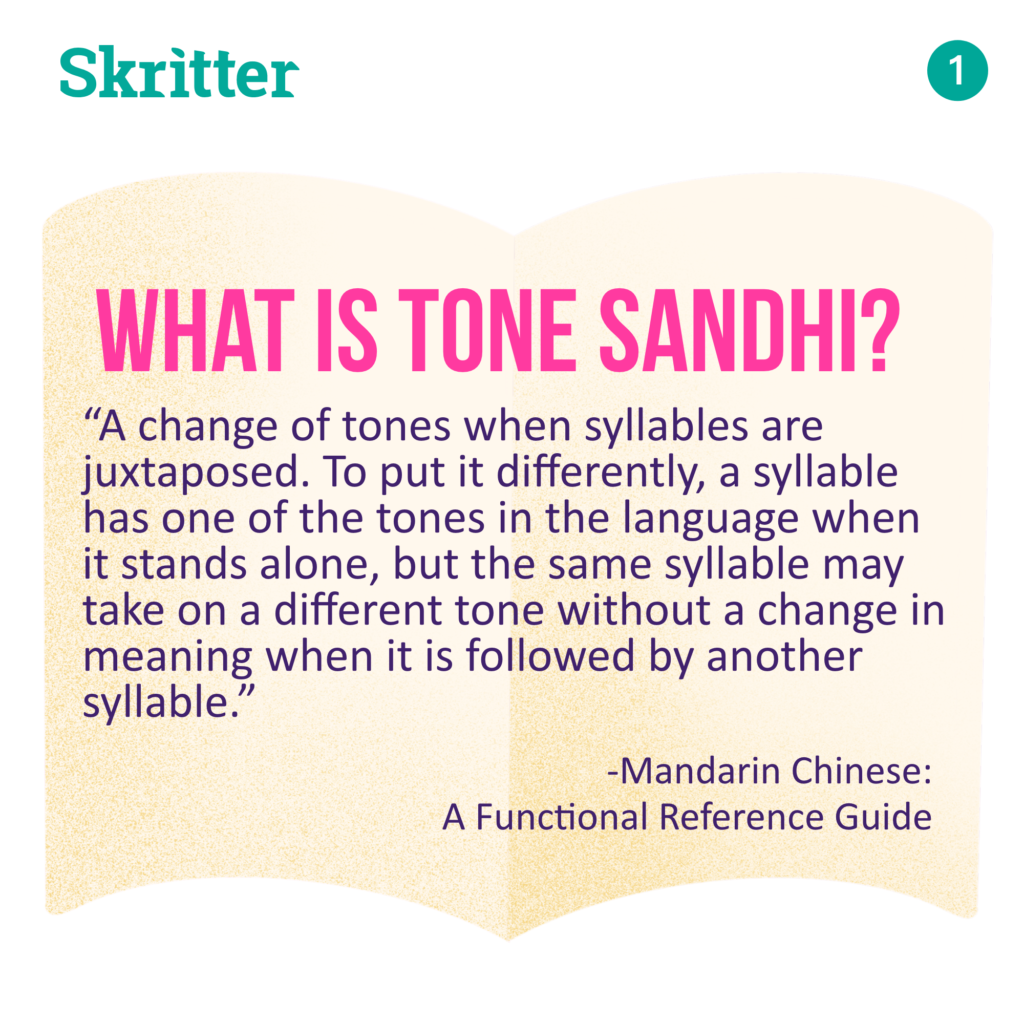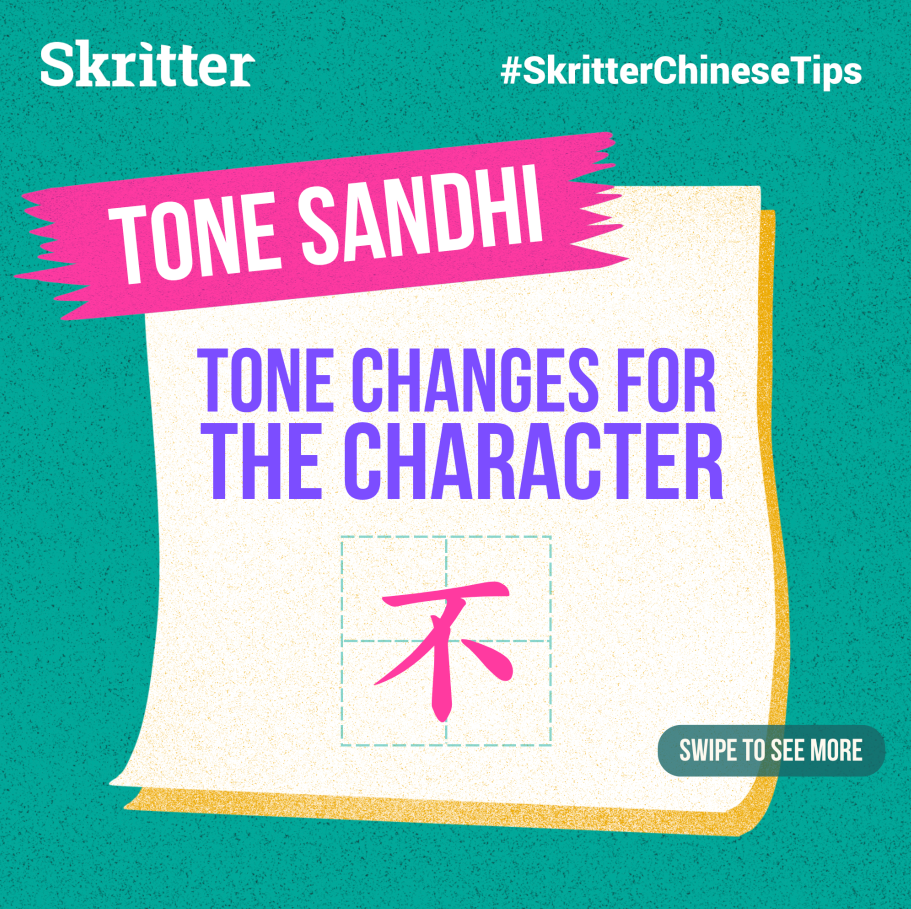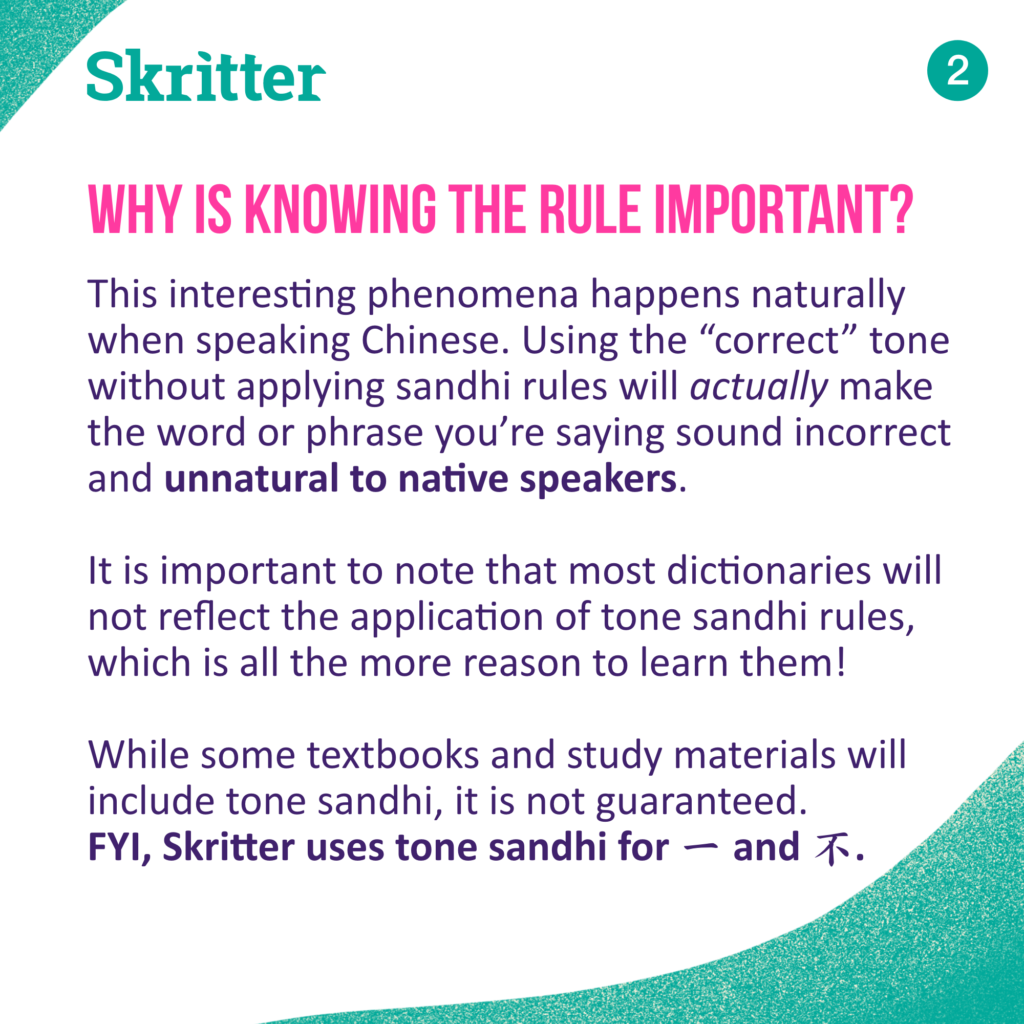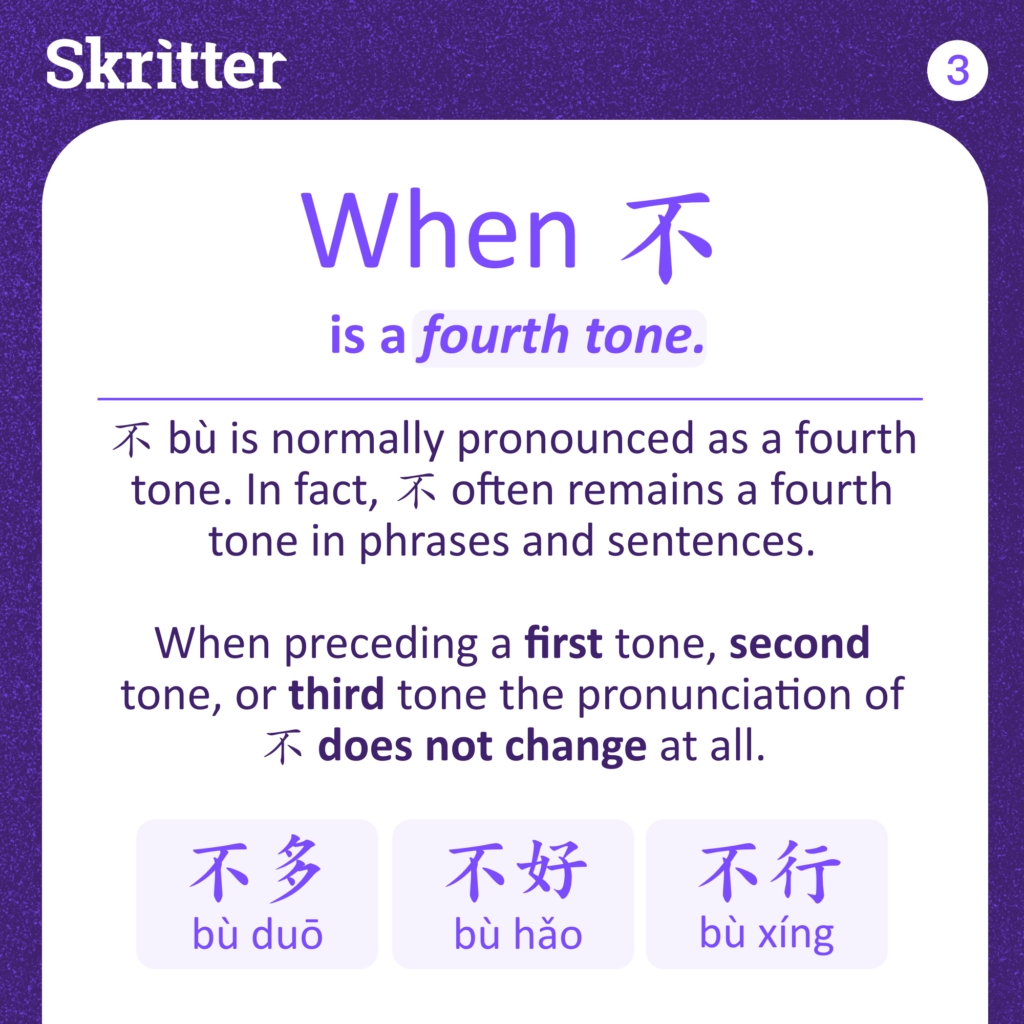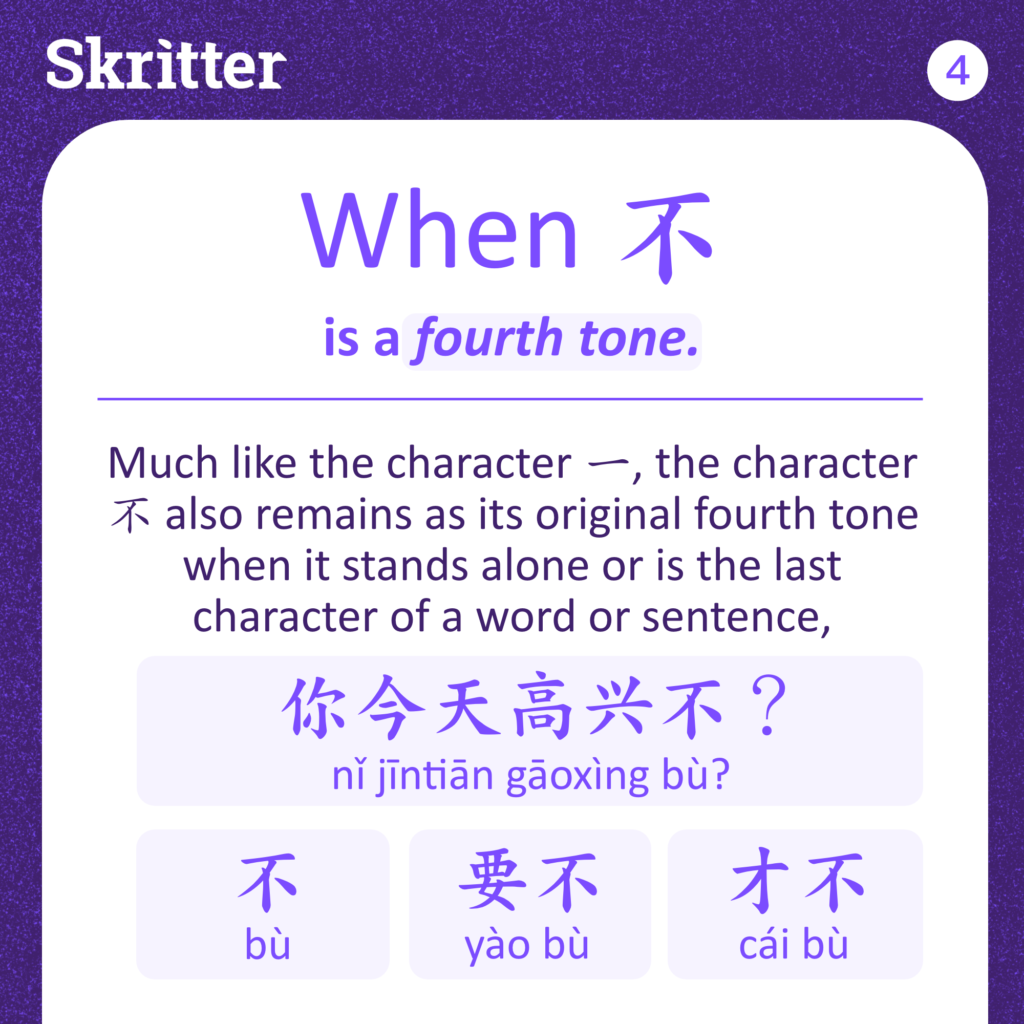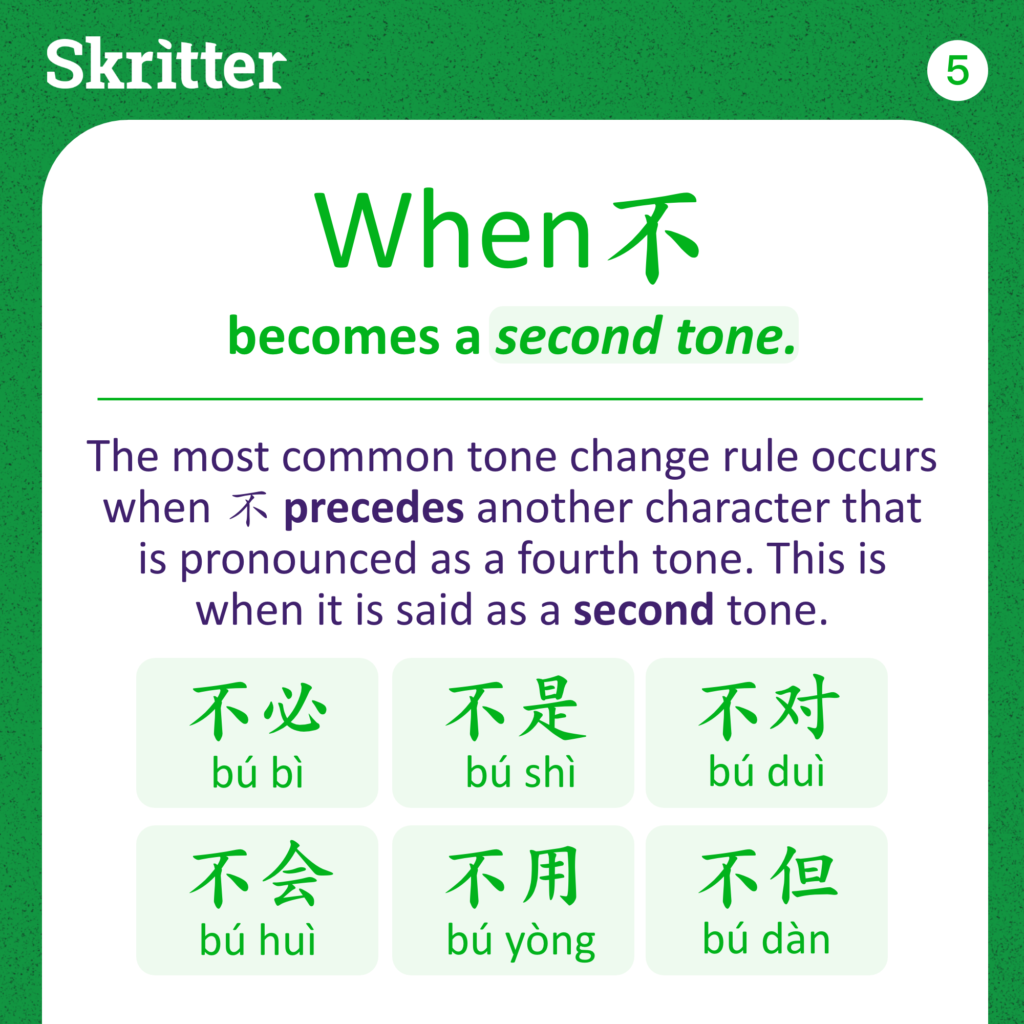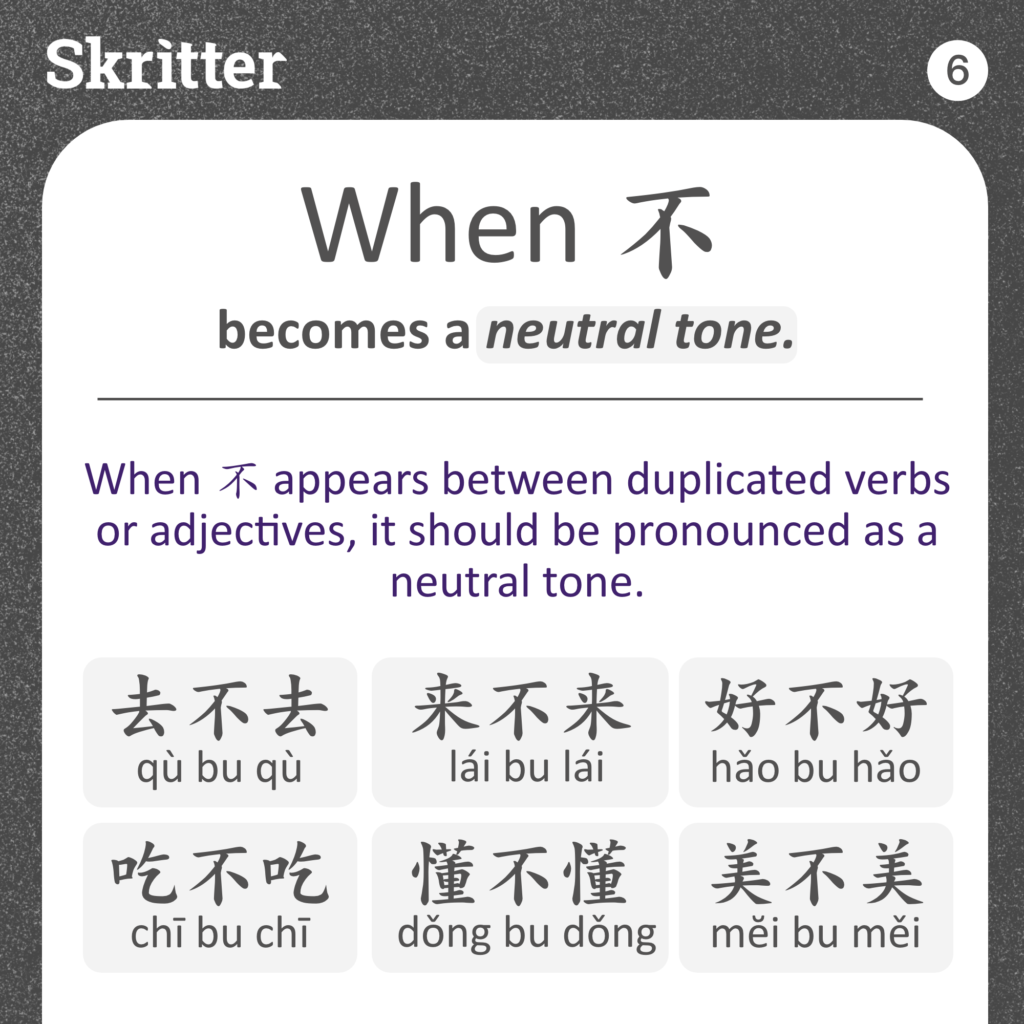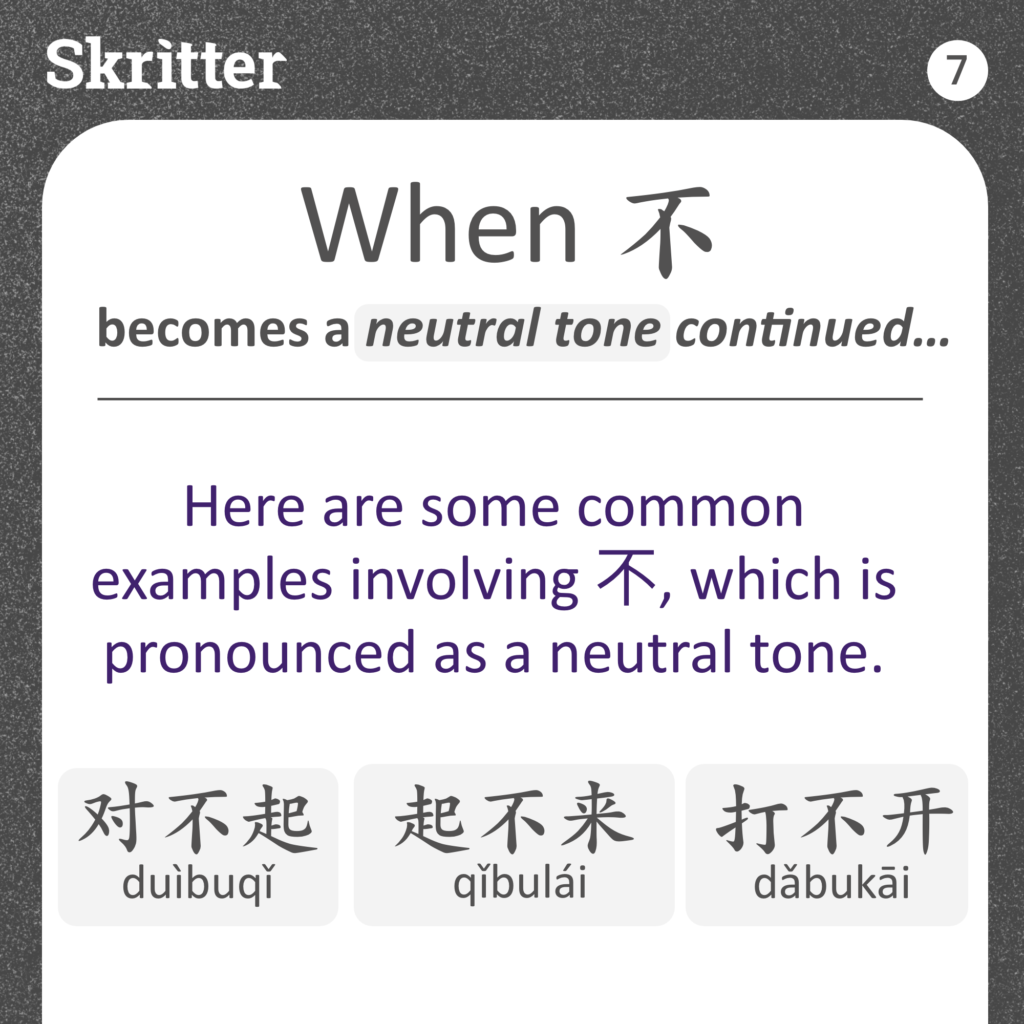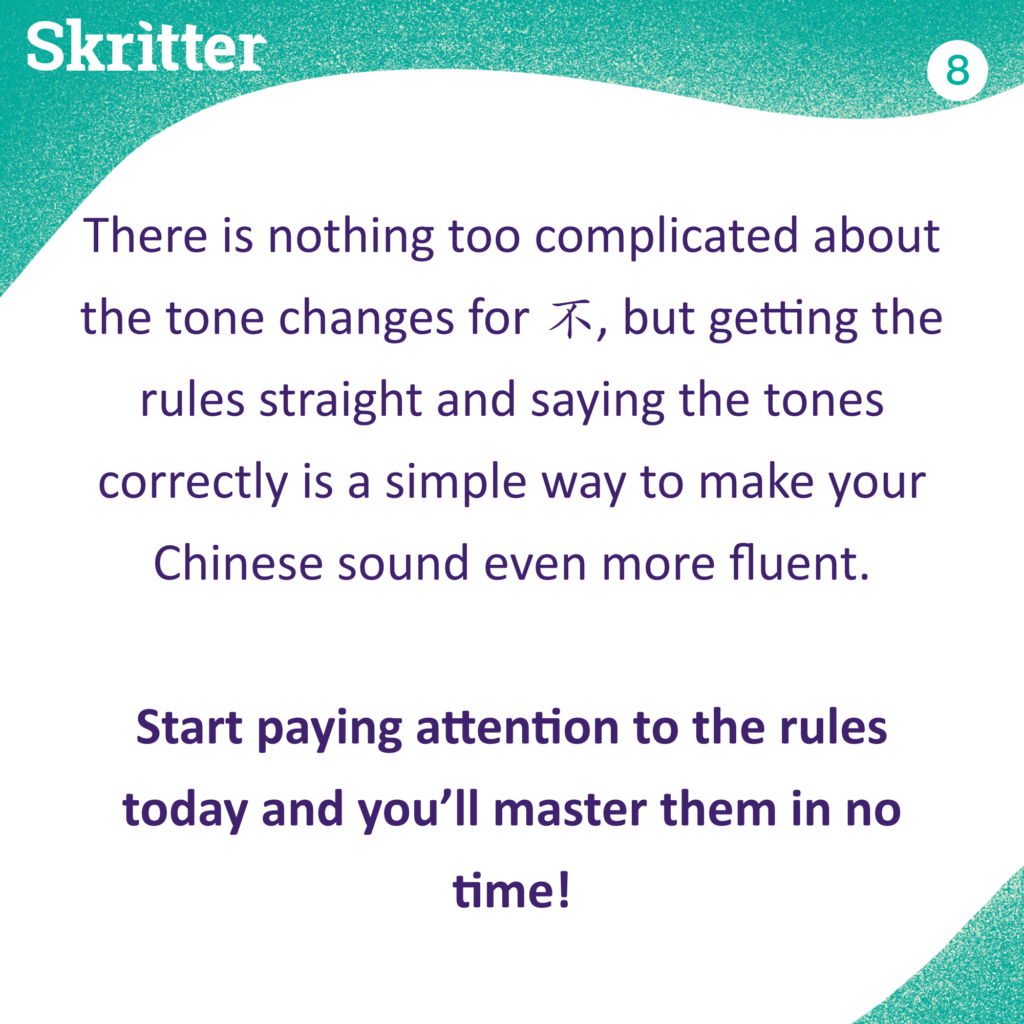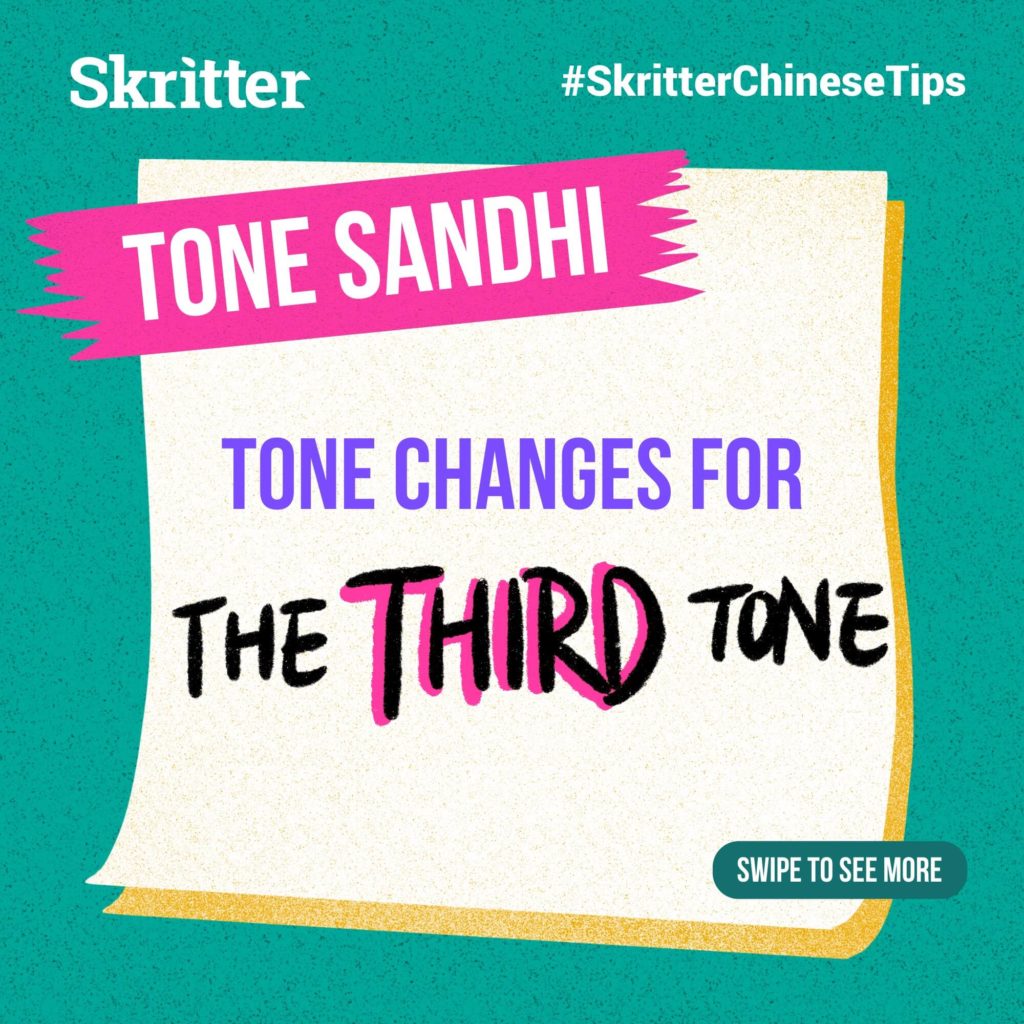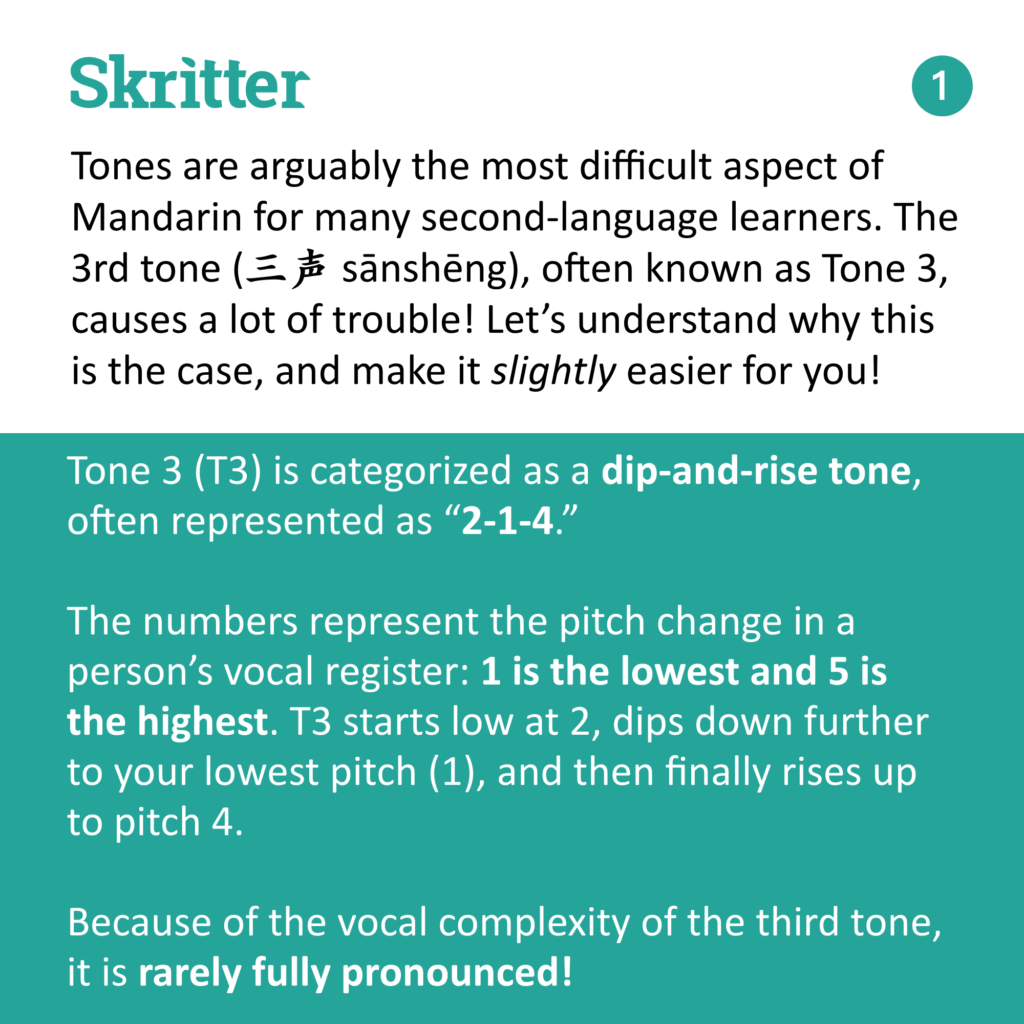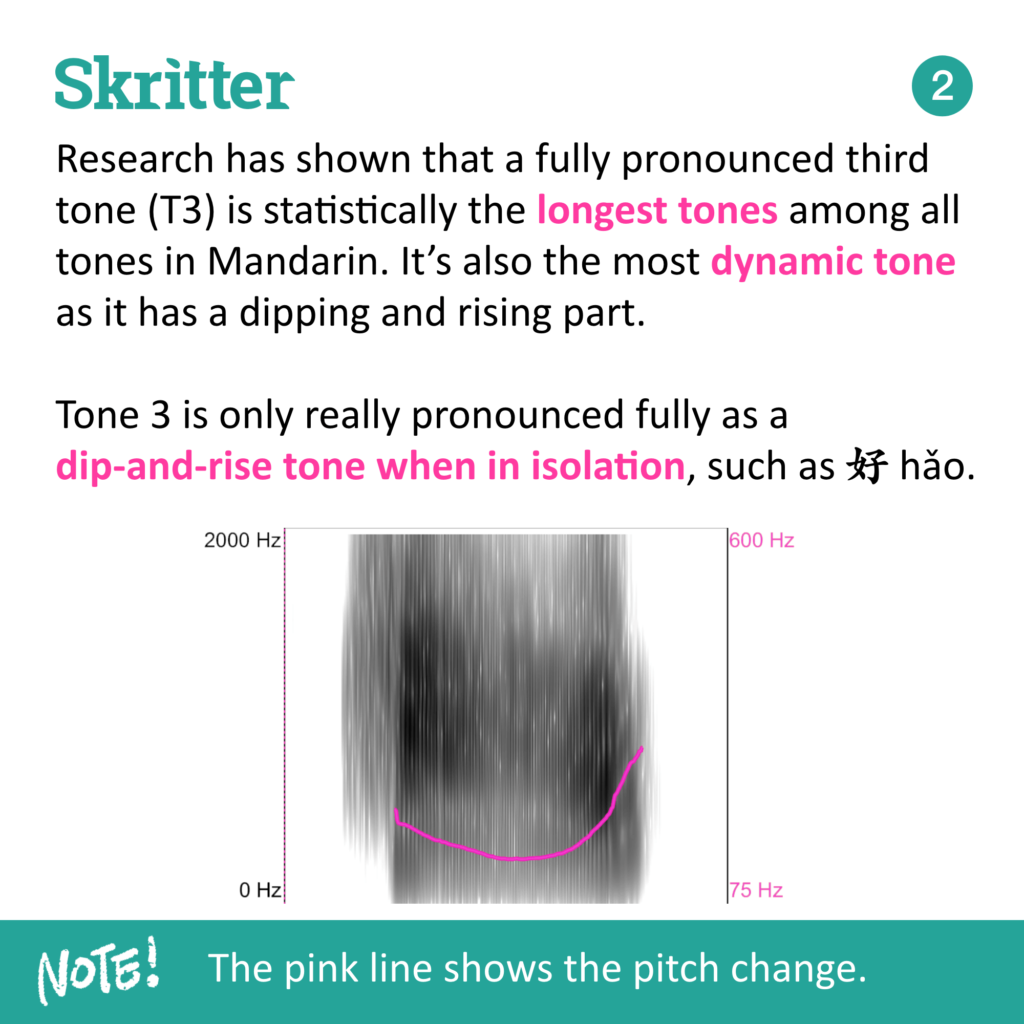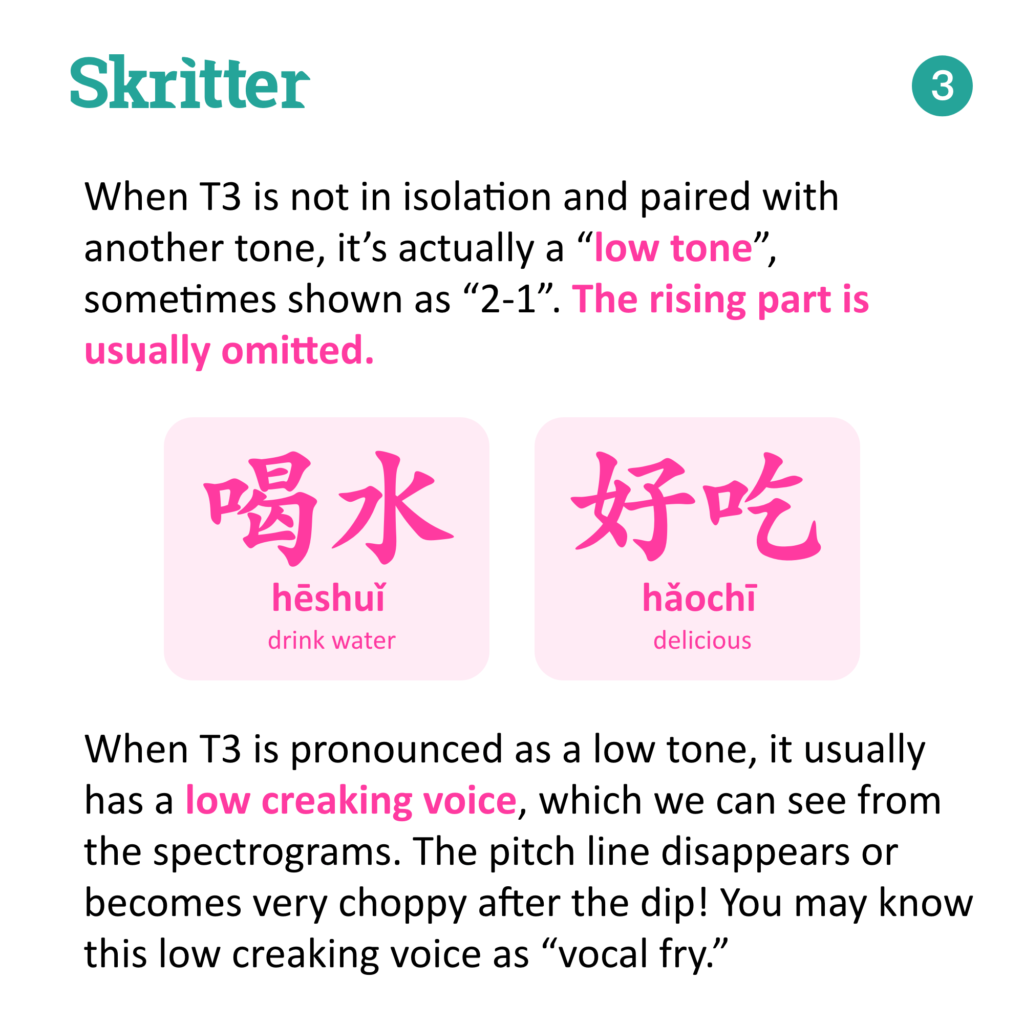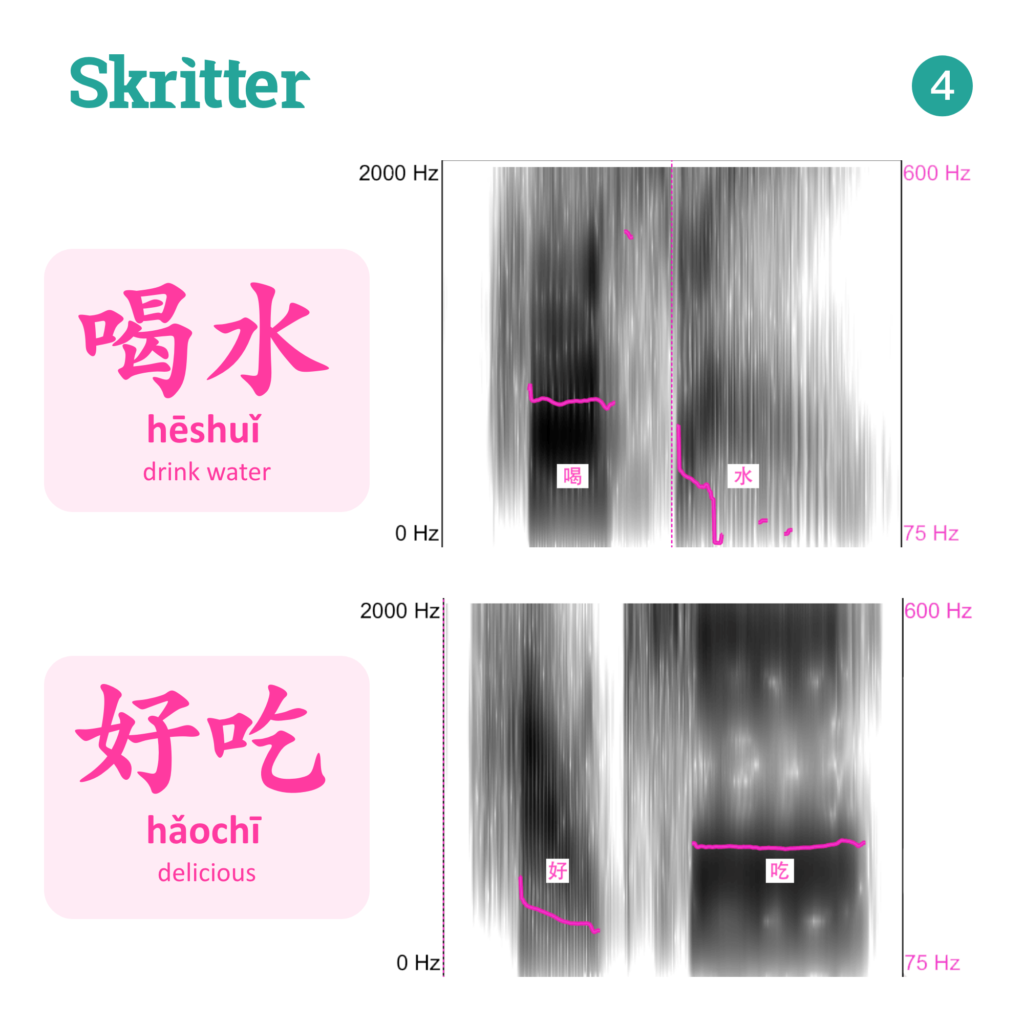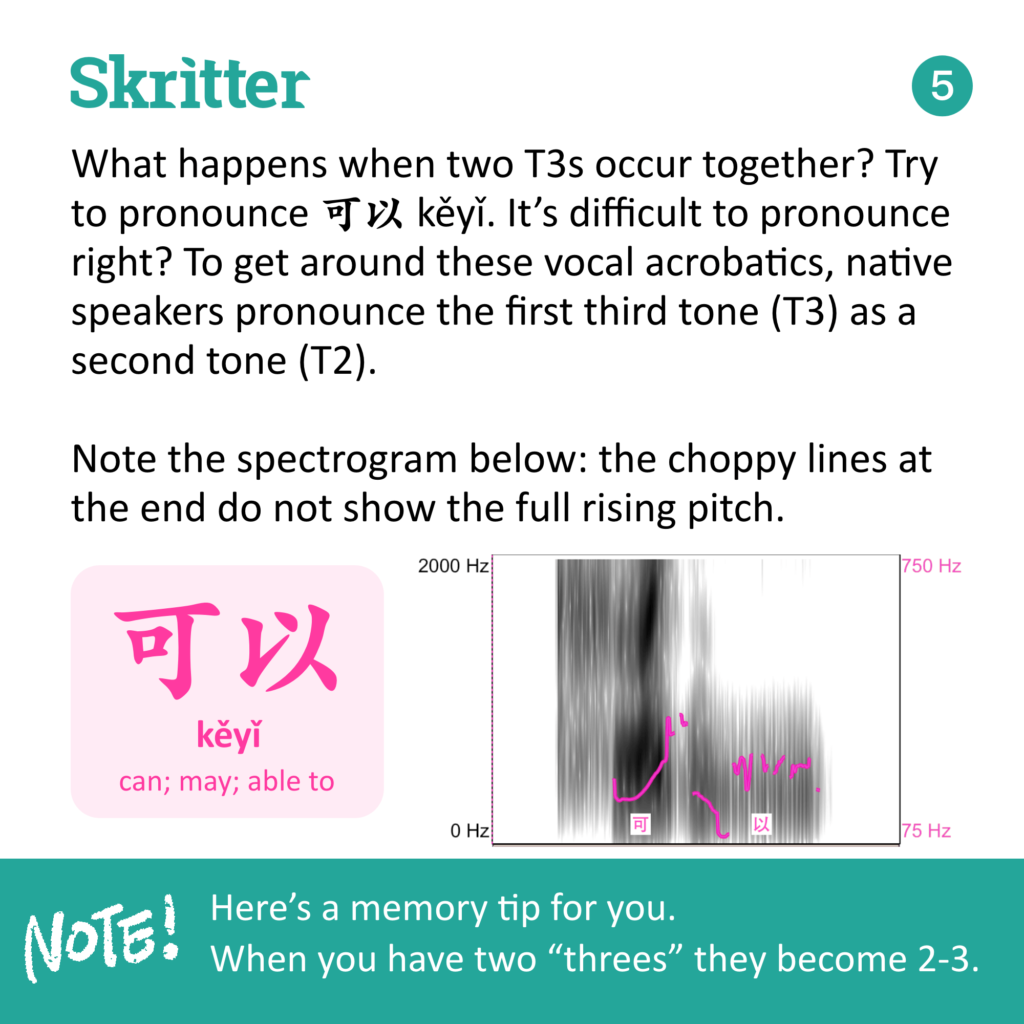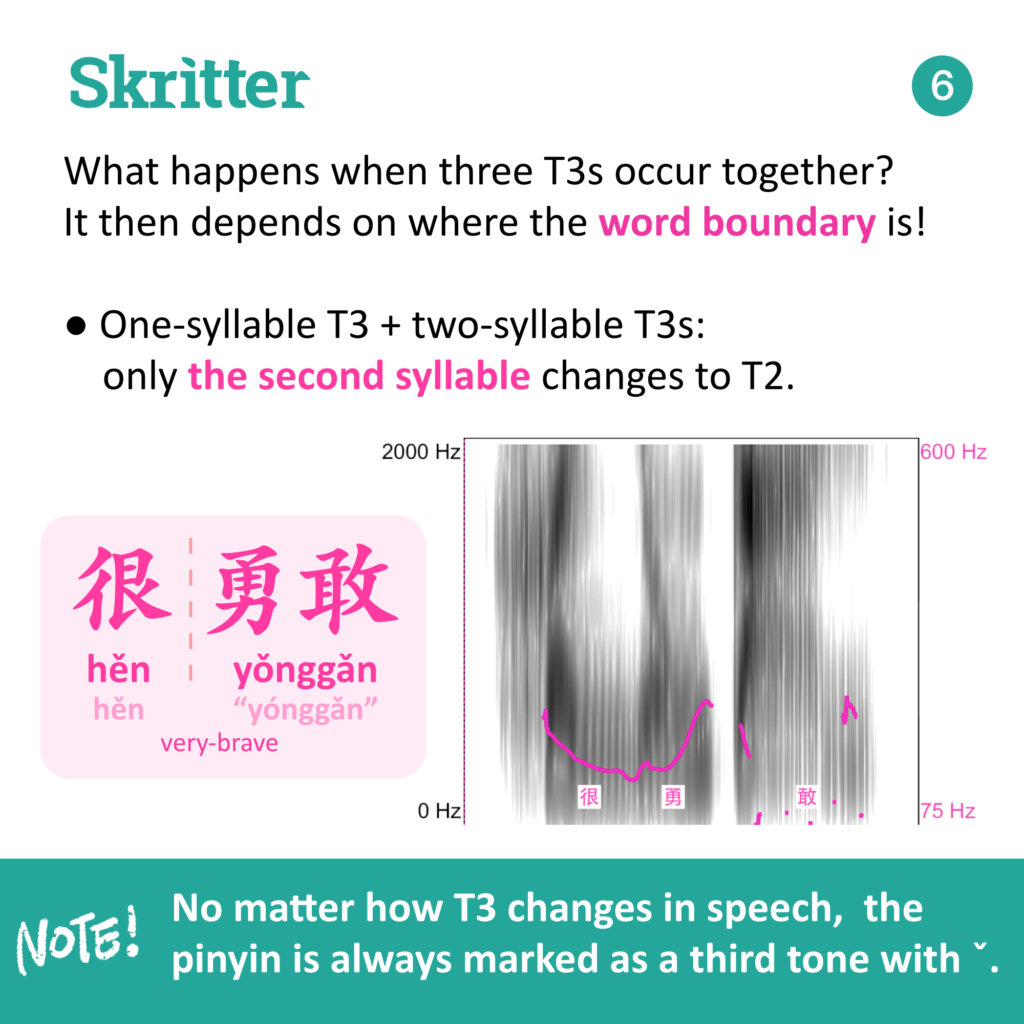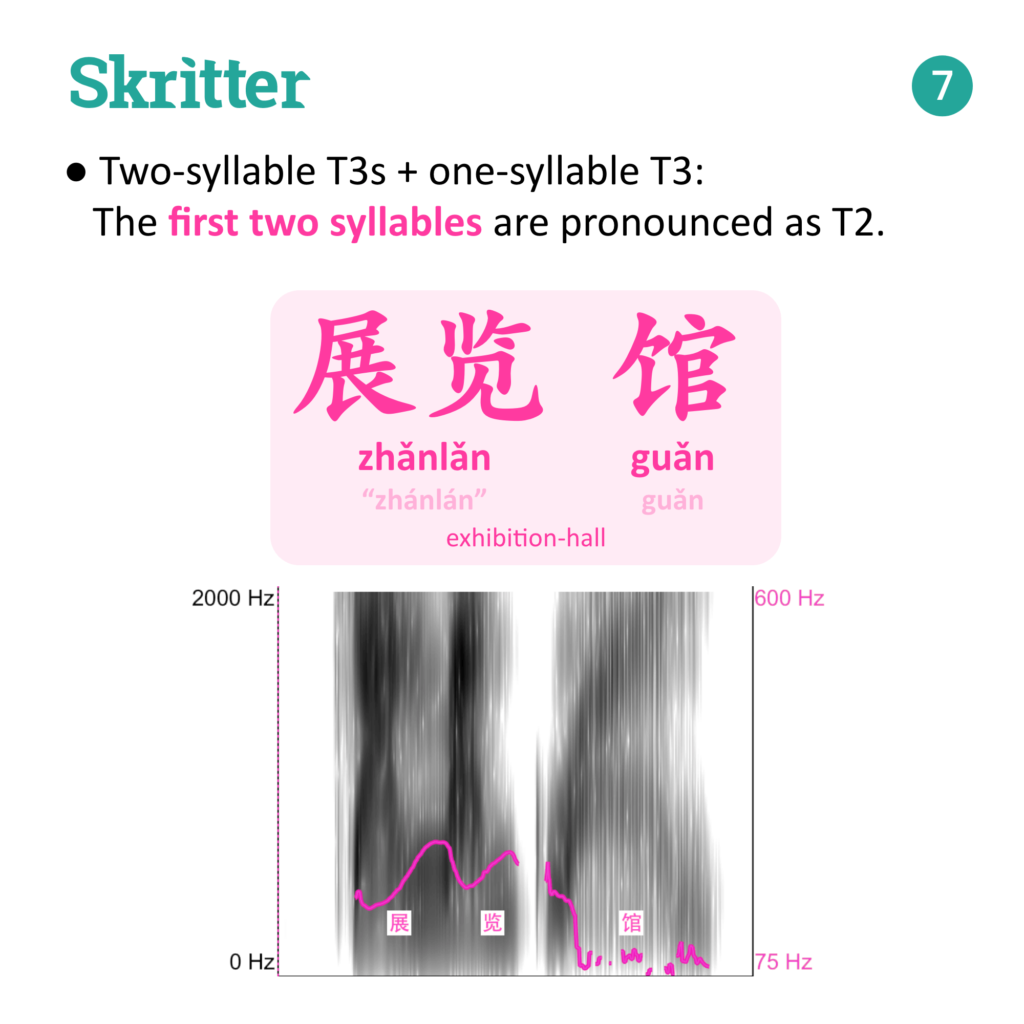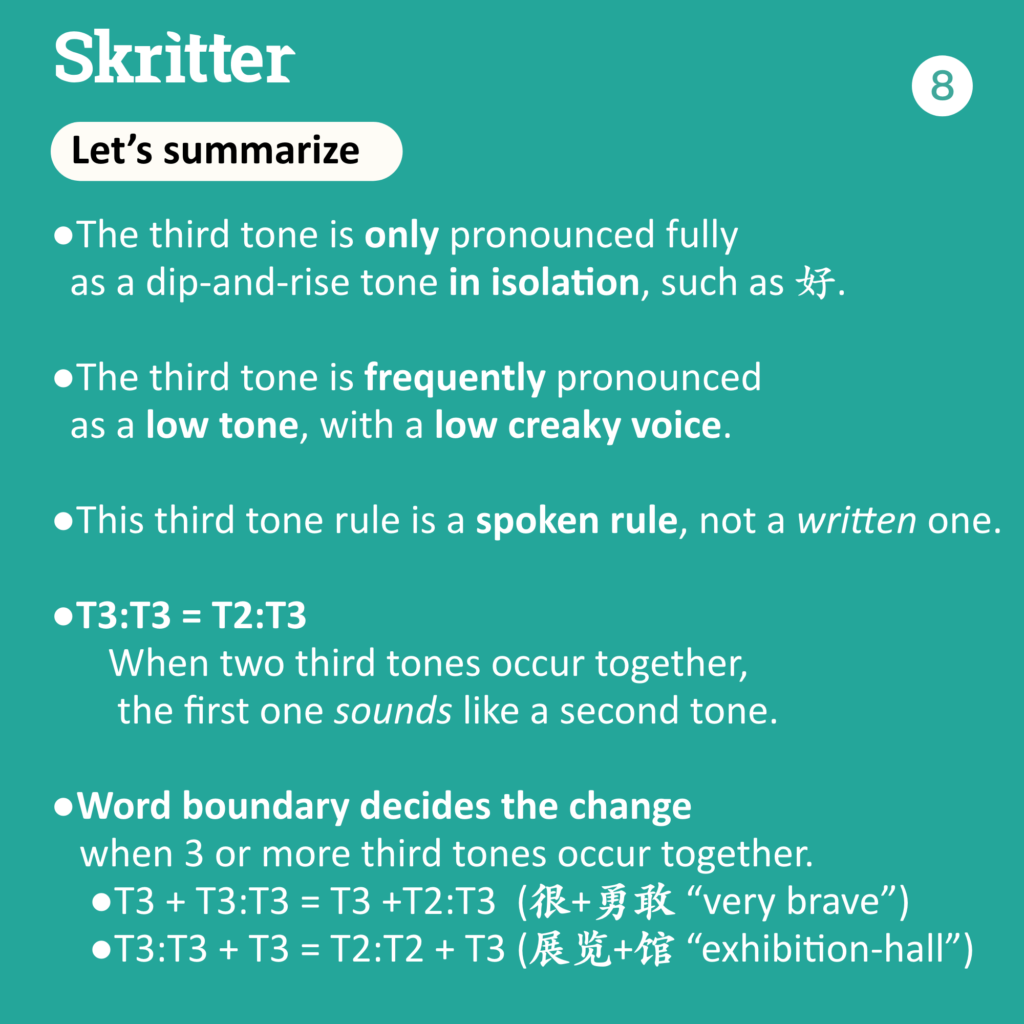As you probably know already, the tones in Mandarin sometimes change their pronunciation depending on the tone of the following syllable. This is called tone sandhi.
The basic rules are simple, but it’s very important that you understand them completely, otherwise your pronunciation will suffer. Therefore, before we continue, let’s look at our articles explaining these changes:
- Tone Sandhi: Tone Changes for the Character “一”
- Tone Sandhi: Tone Changes for the Character “不”
- Tone Sandhi: Third Tone
We also have an article about the neutral tone which you should read in case you’re confused about what no tone mark means and how the neutral tone is pronounced in different situations.
This leads us to the question of how tone changes are displayed in Skritter. For instance, we display the tones after they have changed for 一 and 不, but not when the first of two third tones changes to a rising tone. Why? What about the neutral tone?
Tone changes of 一 and 不 in Skritter
The basic principle is that we want to help students as much as possible. This means that while most dictionaries list 一 and 不 without the tone changes, we list them with. This is also true in almost all textbooks. This means that you pronounce these words and phrases just like they are written.
The reason they aren’t written with tone changes in dictionaries is that the information isn’t necessary since the pronunciation is perfectly predictable; you just need to know the tone of the following character.
Tone Changes for 一
Tone Changes for 不
Several consecutive third tones in Skritter
Now let’s consider the case when the first of two consecutive third tones turns into a rising tone. This is almost never displayed, neither in Skritter nor any other teaching material, unless it’s in a chapter specifically talking about this tone change.
I don’t know the historical reasons behind this, but it isn’t too hard to argue that this is a good idea. Consider the difference between writing 你好 as “nǐhǎo” (without tone change) and “níhǎo” (with tone change). In the first case, you know the correct pronunciation by memorising a simple rule (3 + 3 = 2 + 3), but in the second case, you can’t know if it’s actually 2 + 3 or 3 + 3, you would need to look up the character individually to learn which one it is.
Thus, if we wrote “níhǎo”, we would destroy valuable information for students. Thus, we write “nǐhǎo” instead. You have to learn the 3 + 3 = 2 + 3 rule anyway, there’s no escaping that.
This isn’t the case for 一 and 不, because it’s never a problem what the original tones are for these characters; they are first tone and fourth tone, period.
Read the full blog post here.
The neutral tone
The neutral tone is much trickier because it’s subject to more regional change. In Mainland China, many two-syllable words are pronounced with a neutral tone on the second syllable, but the same words are in some cases pronounced with full tones on both syllables in Taiwanese Mandarin.
Furthermore, the standard we use in Skritter, 现代汉语词典, uses two levels of neutral tones. First, we have words that are definitely neutral tones, no question about it. An example would be 房子 (fángzi) “house”, which is never pronounced with a full tone on “zi”. Second, there are words that are usually read lightly (一般轻读), but that can be read with a full tone as well. We list these types as neutral in Skritter too.
However, even if these words are displayed as having neutral tones in Skritter, we also accept the full tone, so for a word like 衣服 (yīfu), we also accept “yīfú”. This is provided that the word is either of the second kind above (一般轻读) or that the Taiwan standard is with a full tone. If both standards say neutral tone, we will only treat a neutral tone as a correct answer. Read the full blog post here.
Conclusion
We believe that this is the best way to help help you learn Mandarin tones and the pronunciation of characters and words, but it doesn’t mean that the policy is followed in all cases. We have a very large number of words and phrases in our database and we need your help making sure everything is correct. If you find any problems, please send us an error report so that we can fix them!
It should also be mentioned that in the current version of Skritter, we don’t have the ability to list different pronunciations for words (two characters or more), but this is something we’re working on. If you have any other suggestions for how to make tones easier to learn, please let us know!

